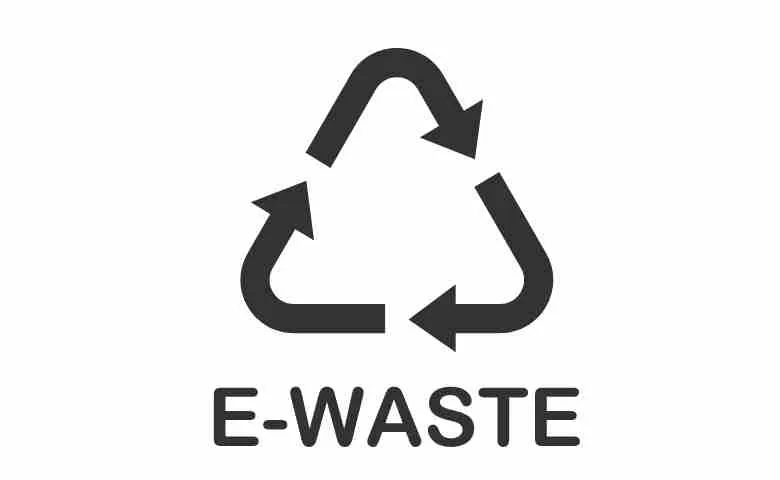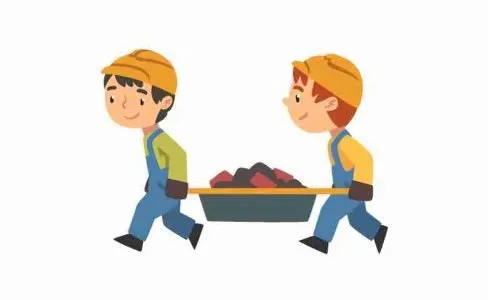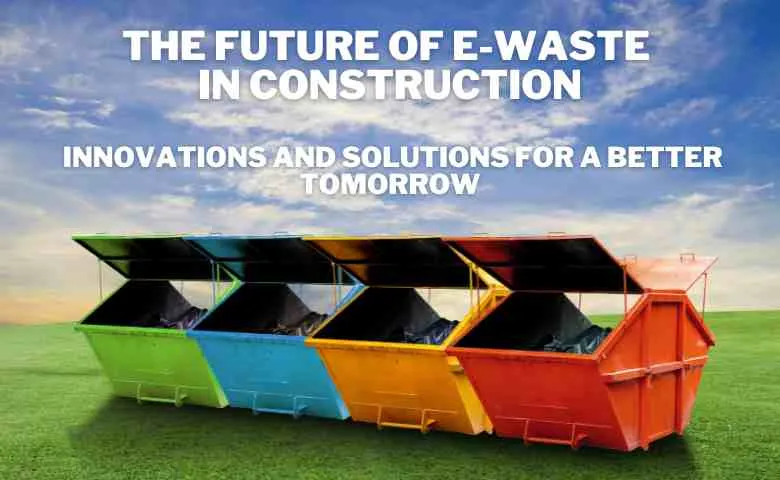Last Updated on June 18, 2025 by Admin
E-waste in the construction industry is a growing concern that has the potential to impact the environment and human health significantly. As technology advances, the amount of electronic waste generated by the construction industry continues to increase, putting pressure on companies to properly manage and dispose of this waste.
The challenge of e-waste management in the construction industry is complex, involving issues such as a lack of proper infrastructure, high costs, complex regulations, and resistance to change. However, with the right tools and strategies in place, it is possible to reduce the environmental impact of e-waste and promote sustainability in the construction industry. In this blog, we will explore the challenges of e-waste in the construction industry and the innovative technologies that offer promising solutions to this pressing problem.
Table of Contents
What is e-waste?
Electronic waste, or e-waste, refers to discarded or non-functional electronic devices and equipment, including those used in the construction industry. Some common examples of e-waste generated in the construction industry include computers, monitors, televisions, cell phones, printers, and power tools.
Practice 15+ AI-generated technical and HR interview questions for Civil, BIM, QS, Planning, HSE and Construction roles. Get instant feedback, improved answers, a 7-day improvement plan, and a full PDF report. Designed exclusively for construction professionals.
One free full interview session included. No credit card required.
The disposal of e-waste can have negative impacts on the environment and human health. E-waste contains toxic substances such as lead, mercury, and cadmium that can leach into soil and groundwater, contaminating the environment and posing a risk to human health. Additionally, e-waste can release harmful chemicals during manufacturing and disposal, contributing to air and water pollution.
Importance of knowing about e-waste
e-waste in the construction industry is essential for several reasons:
- Environmental impact: Electronic waste contains hazardous materials such as lead, mercury, and cadmium that can harm the environment if not properly managed. E-waste from the construction industry contributes to the global problem of e-waste globally and must be addressed.
- Resource depletion: Extracting the minerals and raw materials needed to produce electronic devices requires a significant amount of finite resources. Improper disposal of e-waste contributes to the depletion of these resources.
- Human health: Exposure to hazardous materials in e-waste can negatively impact human health. Workers in the construction industry and those who live near e-waste disposal sites are particularly at risk.
- Economic impact: Improper disposal of e-waste results in a loss of valuable resources that could be recovered and reused. This represents a missed opportunity for the construction industry to reduce costs and become more sustainable.
- Legal responsibility: Governments worldwide have enacted regulations to address the problem of e-waste, including the construction industry. Construction companies must understand and comply with these regulations to avoid penalties and maintain their reputation.

Best Practices for E-Waste Management in Construction
Proper management of e-waste involves a series of steps to minimize environmental and health impacts. The following is a detailed guide on how to manage e-waste properly:
- Collection and segregation: The collection of e-waste should be done safely and controlled. E-waste should be segregated by type and properly stored to prevent damage or contamination.
- Inventory management: Keeping a detailed inventory of the types and quantities of e-waste generated can help determine the appropriate disposal methods and reduce the risk of environmental contamination.
- Disposal through certified e-waste recycling programs: E-waste should be disposed of through certified e-waste recycling programs that follow strict guidelines to ensure that toxic substances are correctly handled and disposed of. These programs typically dismantle the e-waste and extract valuable materials while safely disposing of the toxic substances.
- Reuse and donation: Working electronic devices can be donated or reused, reducing the amount of e-waste generated.
- Hazardous waste management: Hazardous materials, such as batteries and fluorescent light bulbs, should be properly disposed of through specialized dangerous waste management programs to prevent contamination of the environment.
- Implementation of e-waste management plans: Implementing a comprehensive e-waste management plan on job sites can help ensure that e-waste is properly handled and disposed of, reducing the risk of environmental contamination. The plan should include guidelines for collection, segregation, inventory management, and disposal of e-waste.
- Training and education: Providing training and education to workers on the proper handling and disposal of e-waste can help to minimize the risk of environmental contamination and promote environmentally responsible practices.
You Might be Interested
- How to Manage Construction Waste Effectively
- 8 Tips to Reduce and Recycle Waste on Your Construction Site
- Everything You Need To Know About Construction And Demolition Waste
- Construction Waste Management: A Complete Guide
Proper management of e-waste involves a combination of collection, segregation, inventory management, disposal through certified e-waste recycling programs, reuse and donation, hazardous waste management, implementation of e-waste management plans, and training and education. Following these steps can reduce the negative impacts of e-waste on the environment and human health.
Challenges of managing e-waste in the construction industry.
Several challenges are associated with managing e-waste in the construction industry, including.
- Lack of proper infrastructure: In many countries, there is a shortage of adequate disposal facilities for e-waste. This results in improper disposal of e-waste, leading to environmental contamination and health hazards.
- Cost: Proper disposal of e-waste can be expensive, especially for smaller construction companies with limited budgets. This can result in companies taking shortcuts, such as illegally dumping e-waste in developing countries.
- Complex regulations: Different countries have different rules regarding the disposal of e-waste, making it difficult for construction companies to ensure compliance. This can lead to confusion and misunderstandings about how to manage e-waste.
- Resistance to change: Some construction industry companies may resist change and not see the value in investing in e-waste management. This can make it difficult to convince companies to adopt sustainable practices.
- Limited public awareness: There is limited public awareness about the dangers of e-waste and the importance of proper disposal. This can make it difficult to drive change and encourage companies to adopt sustainable practices.

Governments Laws for Properly Managing e-waste
Governments worldwide have implemented regulations and laws for properly managing e-waste in the construction industry to minimize environmental and health risks. The specific regulations vary by country, but some standard rules include the following:
- Prohibitions on landfill disposal: In many countries, e-waste is prohibited from being disposed of in landfills, as it contains toxic substances that can leach into the soil and groundwater.
- Requirements for certified e-waste recycling: Governments often require e-waste to be disposed of through certified e-waste recycling programs that follow strict guidelines to ensure that toxic substances are correctly handled and disposed of.
- Producer responsibility: In some countries, producers of electronic devices are responsible for collecting and properly disposing of e-waste generated from their products.
- Hazardous waste management: Hazardous materials, such as batteries and fluorescent light bulbs, are often subject to specialized hazardous waste management regulations.
- Import/Export restrictions: Some countries have conditions for importing and exporting e-waste to prevent the illegal dumping of toxic waste in developing countries.

Types of e-waste management programs
E-waste management programs are initiatives to reduce electronic waste’s environmental and health impacts. The following are some common types of e-waste management programs:
- Take-back programs allow consumers to return used electronic devices to the manufacturer or retailer for proper disposal.
- Recycling programs: Certified e-waste recycling programs dismantle electronic devices and extract valuable materials while safely disposing of toxic substances.
- Collection events: Collection events allow consumers to drop off their used electronic devices for proper disposal.
- Product stewardship programs: Product stewardship programs are initiatives where producers of electronic devices are responsible for collecting and properly disposing of e-waste generated from their products.
- Public education campaigns: Public education campaigns raise awareness about the importance of proper e-waste management and provide information on how to dispose of e-waste properly.
E-waste management programs are initiatives to reduce electronic waste’s environmental and health impacts. They include take-back programs, recycling programs, collection events, product stewardship programs, and public education campaigns. By implementing these programs, the negative impacts of e-waste can be reduced.
Downloads:
- Civil Engineering Interview Questions and Answers PDF eBOOK
- Mostly Asked Mechanical Engineering Interview Questions and Answers
- How To Face A Technical Interview
- Effective Job Search Strategies for Engineers
- Top 50 HR Interview Questions and Answers for Engineers
- Civil Engineering Careers Blueprint eBook: The Great Construction Career
New technologies for e-waste management in construction Industries
Several new technologies for e-waste management in the construction industry can help improve the sector’s sustainability and reduce its impact on the environment and human health. Some of these technologies include:
- E-waste recycling plants: These facilities use specialized equipment to recover valuable materials from e-waste, such as metals, plastics, and glass, which can be reused in the manufacture of new products.
- IoT-based waste management systems use sensors, cameras, and other Internet of Things (IoT) devices to monitor e-waste and track its movement from collection to disposal. This helps to ensure that e-waste is managed correctly and reduces the risk of illegal dumping.
- E-waste tracking software: This software allows companies to track their e-waste and monitor their compliance with regulations. It can also provide real-time information about the environmental and social impacts of e-waste, allowing companies to make more informed decisions.
- Artificial intelligence-based waste sorting systems: These systems use machine learning algorithms to sort e-waste into different categories, making it easier to recycle and dispose of different types of waste.
- Biodegradable electronics: Researchers are developing biodegradable electronics that can be broken down naturally and safely, reducing the environmental impact of e-waste.
Overview of successful e-waste projects
Numerous e-waste projects are being implemented globally to reduce electronic waste’s environmental and health impacts. Here are a few examples:
- The “Closing the Loop” project in Europe aims to improve the collection, treatment, and recovery of e-waste in Europe. The project seeks to promote best practices in e-waste management, increase recycling rates, and reduce the environmental impact of e-waste.
- The “Green Disk” project in Japan: A project that promotes the responsible disposal of e-waste in Japan through a network of collection points and certified e-waste recycling programs. The project also provides information and education on the importance of proper e-waste management.
- The “E-waste Academy” in South Africa is an initiative that trains individuals and small businesses to handle and dispose of e-waste properly. The project seeks to improve e-waste management practices in communities and reduce the environmental impact of e-waste.
- The “E-waste Recycling Partnership” in the United States: A partnership between government agencies, electronics manufacturers, and recycling organizations aimed at improving e-waste management in the United States. The association provides funding for e-waste collection and recycling programs and promotes best practices in e-waste management.
- The “E-waste Management in Africa” project aims to improve e-waste management practices in African countries. The project seeks to establish e-waste management systems, promote the use of certified e-waste recycling programs, and raise awareness about the importance of proper e-waste management.
These are just a few examples of e-waste projects being implemented globally. By promoting best practices in e-waste management, increasing recycling rates, and reducing the environmental impact of e-waste, these projects aim to minimize the negative impacts of e-waste on the environment and human health.
In conclusion, e-waste in the construction industry is a growing problem that requires immediate attention. From the lack of proper disposal facilities to complex regulations, several challenges must be addressed to promote sustainability and protect the environment and human health.
However, new technologies such as e-waste recycling plants, IoT-based waste management systems, e-waste tracking software, artificial intelligence-based waste sorting systems, and biodegradable electronics offer promising solutions. By embracing these technologies and working together, the construction industry can play a crucial role in reducing e-waste and promoting sustainability for future generations.
Related Posts:
- Waste Management Careers: A Comprehensive Guide to Jobs, Skills, and Career Progression
- Achieving Sustainability in Construction Through Effective Waste Management
- Innovative Water and Wastewater Solutions
- Eco-Friendly Elevated: Green Innovations in London Loft Conversions
- Taking Control: A Comprehensive Guide to Property Management
- Conducting Effective Site Surveys: Tools, Techniques, and Best Practices
- Waste Management Careers: A Comprehensive Guide to Jobs, Skills, and Career Progression


